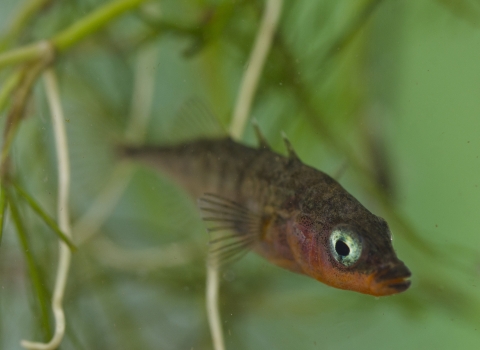Beadlet anemone
Beadlet anemones are usually first seen as dark red jelly blobs on rocks; however once the tide comes in the true beauty of these predators can truly be admired! Most Beadlet anemones are a dark red colour, but they can also be green or orange. Fiercely territorial, anemones use their stinging tentacles to catch passing prey such as shrimps, crabs or even small fish.
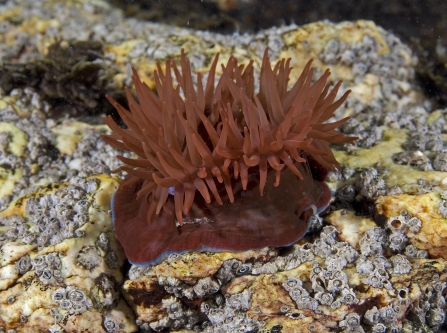
Photo: Paul Naylor.
Shore crab
The Shore crab may be the most common crab on our beaches, but that doesn’t make this crustacean any less fascinating! Usually a green-ish colour, Shore crabs are usually spotted feasting on anything and everything they come across including seaweed, barnacles, mussels and sometimes even smaller crabs. If you spot one with an orange mass on its belly, this will be a female protecting fertilised eggs from predators!
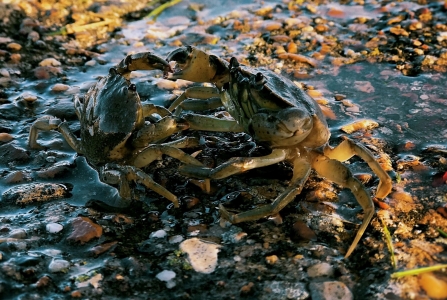
Photo: Mikaili Cornock
Mermaid Purses
Their mythical name may be deceiving, as these tough little pouches are the egg cases of sharks and rays! They are nearly always empty, as they become detached from the seabed when the egg has hatched. Mermaid Purses found along Essex shores are most commonly from Thornback rays which can lay up to 150 egg cases per year.
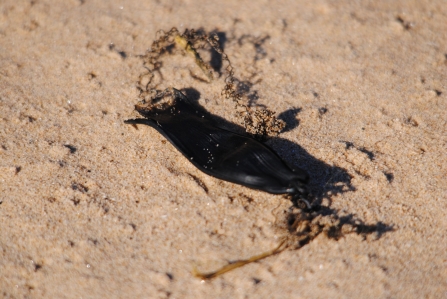
Sand Mason worm
You may have seen one of these fascinating worms before and not even know it! The Sand Mason worm builds itself a protective tube out of bits of shell and sand, crowned with a branched structure that looks like a little sand tree. When the tide comes in, they feed using tentacles to catch passing particles. Why not try and spot one this month? They can be found in sandy areas by groynes.
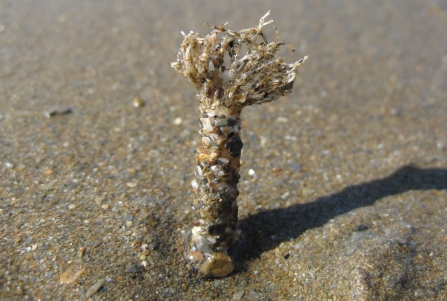
Photo: Nigel Phillips
Moon Jellyfish
Approximately the size of a plate, Moon Jellyfish are most recognisable by four purple circles visible through a translucent white bell. These circles are the reproductive organs of the jellyfish and are situated at the bottom of the stomach. You may have seen this Jellyfish species floating just beneath the surface of the water during a visit to the beach!
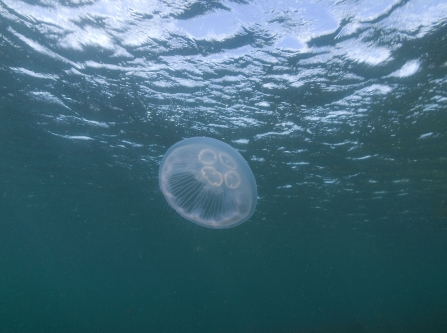
Photo: Paul Naylor
Orange seals
Did you know? The famous Essex ‘orange seals’ are actually Common seals! The strange orange hue is caused by iron oxide in the mud attaching itself to the seal’s fur when they haul out to rest or digest their food. They can be seen in the backwaters of The Naze Centre at Hamford Water Nature Reserve and all along the coast… during the summer months you may see females with their young pups!
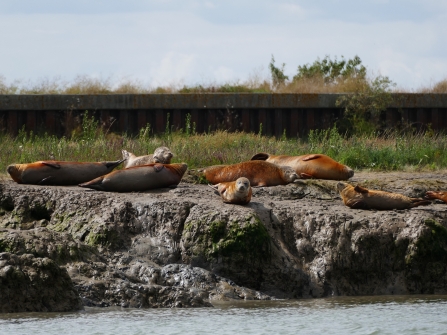
Photo: Emily McParland

